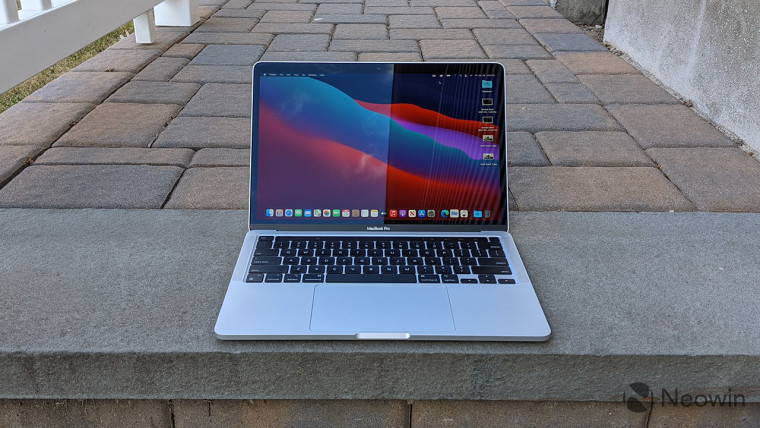
Earlier this year at WWDC, Apple announced that it was going to transition its entire Mac lineup to its custom ARM processors, which the company has been designing for iPhones and iPads for years. The first Macs to use Apple Silicon were introduced in November, and we’ve finally got our hands on one.
This unit was sent, believe it or not, by Intel. In fact, Intel sent over a bunch of goodies, such as a Razer Book 13, a Razer Core X external GPU enclosure, an Nvidia GeForce RTX 2080 Ti, a CalDigit Thunderbolt dock, and a Samsung T7 Touch SSD. It also offered to send an Xbox controller, but I just have so many of those.
The pitch was simple: let’s show what the Windows ecosystem can do. Now obviously, being that Intel sent these units, that doesn’t mean that my coverage will be swayed. I’ll be testing out all of this hardware and coming to my own conclusions. But it’s right about how I can’t connect an external GPU to the MacBook Pro, or apparently even dual monitors (I haven’t tested that last bit myself yet).
But the MacBook Pro is quite a nice PC. I even edited the video that you’re about to see in Adobe Premiere Pro beta, and compiled it in Media Encoder beta. The beta apps are the ones that run native on Apple Silicon, rather than running in Apple’s Rosetta software.
While I quite like the PC itself, it feels so strange that Apple didn’t bother to redesign the hardware at all. All of the M1 Macs go right in the chassis of their Intel-powered predecessors, and being that Apple so rarely updates its Mac designs, it feels dated. ARM processors are renowned for being power-efficient and not needing a fan to stay cool. We’ve seen Qualcomm PCs like the Samsung Galaxy Book S and the Microsoft Surface Pro X that were reengineered with ARM in mind, packing thinner fanless chassis that you simply couldn’t put a full-powered Intel processor inside of.
In parts two and three of this series, you’ll see the MacBook Pro next to the Razer Book, and just how much more modern the Razer Book looks.
Check out the rest of the series: